This is an AGFA Optima I produced between the years 1960 – 64. It was the followup to the original Optima from 1959 which was one of the very first cameras with a fully automatic program auto exposure mode. It’s selenium meter would allow the camera to automatically choose a proper exposure setting with minimal input from the user. The Optima I was a less expensive version of the original model. The entire Optima series helped to usher in a new era of point and shoot fully automatic cameras that would set the stage for modern cameras for decades to come.
Lens: 45mm f/2.8 AGFA Color Agnar coated 3-elements
Focus: 3 ¼ feet to Infinity
Type: Scale Focus
Shutter: Prontor-Lux Leaf
Speeds: B, 1/30 – 1/250 seconds
Exposure Meter: Selenium Cell
Battery: none
Flash Mount: Coldshoe and M and X Flash Sync
Manual: http://www.cameramanuals.org/agfa_ansco/agfa_optima-1.pdf
History
Today, the name AGFA exists as Agfa-Gevaert N.V., a Belgium owned multinational corporation that develops, manufactures, and distributes analog and digital imaging products and systems. Over the past few decades, this company has gone through many ownership changes and reorganizations to where the existing AGFA company bares little resemblance to the one that developed the Optima I.
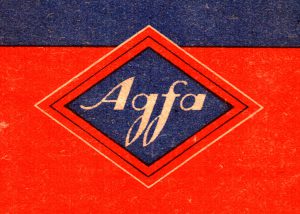
The original AGFA company was founded in 1867 in a borough of Berlin, Germany called Rummelsburg. AGFA was an acronym for their German name, Aktiengesellschaft für Anilinfabrikation. In their early years, AGFA made dyes and other stains for industrial use. The company went public in 1873, and by 1894, the company expanded into the photographic chemicals and film industry.
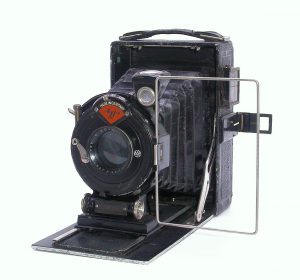
AGFA continued to make film and other film related products throughout the early parts of the 20th century but in 1925, would merge with the German chemical company IG Farben, and that same year would acquire Rietzschel Camera Works from Bayer who was also part of IG Farben (yes, Bayer the Aspirin company). A year later, AGFA/Rietzschel released it’s first camera, the Standard. By 1927, the name Rietzschel was retired, and in 1928, AGFA acquired the American company ANSCO, which itself is an acronym for the Anthony & Scovill Co.
This history of AGFA is quite diverse and confusing, but it’s not the most interesting thing I could talk about, so I’ll just skip to the late 1950s when the need for a camera like the Optima was first realized.
After World War II, the world largely returned to normal. People started families, had babies, and went on vacations. The need for inexpensive and easy to use cameras to capture all these new memories exploded, and a huge number of new companies in Japan started making new models alongside new and existing American and German companies. The late 1940s and 50s saw many innovations like the proliferation of new color film stocks, coated lenses, the SLR camera, coincident image rangefinders, selenium light meters, and many others.
The requirement to have a comprehensive knowledge of photography was no longer an obstacle for the novice in order to shoot a camera and get great images from it. Despite all of these advancements however, there was still some need for manual control over things like setting shutter speed and aperture sizes. Companies like Kodak and AGFA had experimented with fully automatic exposure cameras with models like the Kodak Super Six-20 from 1938 and the Agfa Automatic 66 from 1956, but both of these were primitive and very expensive examples of auto exposure cameras that were produced in very limited numbers (less than 800 Kodak Super Six-20s were ever made).
Until the late 1950s, the concept of a fully automatic “point and shoot” camera that required the photographer to simply aim the camera at something and press the shutter release must have seemed like science fiction, but then all of a sudden, all at once in 1959, five different companies released six different models capable of fully automatic exposure. These six models became known as the Auto Exposure Class of 1959. They were:
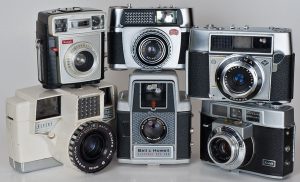
- AGFA Optima
- Bell & Howell Electric Eye 127
- Braun Paxette Electromatic
- Kodak Automatic 35
- Kodak Brownie Starmatic
- Revere Eye-Matic EE 127
In the 1950s, the door to mass adoption of photography had been slowly opened with each incremental advancement, but these six models kicked it wide open to the point where anyone could shoot family vacations in full glorious color without having to remember light value scales or exposure charts.
Popular Photography did a review of these 6 models in their November, 1959 issue and declared that auto exposure worked well given the limits of the cameras. Fully acknowledging that each of these cameras had slow lenses with little to no ability to control focus, and came with light meters that couldn’t handle every possible lighting situation, they accomplished their intended purpose. You could take any of these 6 cameras and give them to someone with little to no knowledge of photography and get good images from it.
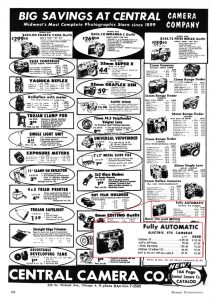
Looking at each of these models in hindsight, they were pretty basic. The Revere was the most expensive and only model equipped with a rangefinder or any kind of focus aide. The rest were either scale focus models, or fixed focus like the Bell & Howell, Braun, and Kodak Starmatic. Only the Kodak Automatic 35 had anything resembling a fast lens with it’s 44mm f/2.8 Ektanar. The rest were either f/5.6 or slower, or lenses that didn’t even bother to list an aperture size. They all had basic selenium meters that averaged the light readings across the whole scene which is fine for general photography, but scenes with high contrast could have unexpected results. Finally, none of them gave any indication as to the chosen shutter speed or aperture sizes anywhere in the camera. At most, you’d get a red/green readiness indicator. Still, the mere fact that these cameras worked at all, was still a pretty significant achievement.
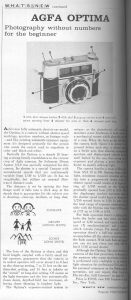
The model being reviewed here is the Optima I, which was a lower cost version of that original AGFA Optima model, introduced in 1960. The original model had a retail price of $79.95, but I could not find any information about what the Optima I sold for. In my research for this review, I found several references to the same information online that suggests the Optima I was a simpler and cheaper version of the original model, but I don’t know that I agree with that. For one, the lens was improved from the original f/3.9 Apotar S to the f/2.8 Color Agnar, and the process to activate the meter was combined from two steps on the original model, to a single one on the photographers right side of the camera. I don’t have an original Optima to compare, but from what I can see, the only thing missing from the Optima I is the round dial that opens and closes a door which covers the flash sync port and a threaded port for a shutter release cable.
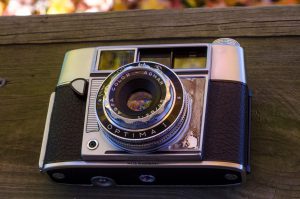
The Optima family would stay in production until at least 1966, and would spawn several variants including a very strange looking twin lens reflex design known simply as the Optima Reflex. It helped cement AGFA as a maker of innovative and well built cameras. Despite their successes at camera making, AGFA was a diversified company that put their film product first over their camera designs. By the 1970s, AGFA would concentrate on cheap 126 Instamatic and 110 film cameras and would exit the camera making business altogether by the 1980s.
Today, the AGFA Optima series isn’t all that in demand, but people who appreciate innovative cameras that pioneered new features would appreciate any of the models. Despite their simplistic feature set, the cameras are surprisingly capable. Sadly, as with many selenium cell metered cameras, there is a highly likely chance that the meters won’t work, and since this camera depends on the meter to work, many Optimas are display pieces only. There is some limited manual control which I’ll discuss later in this article which may allow them to still be used, but I doubt many would want to go through that effort.
My Thoughts / Repairs
This camera came to me as a “bonus” camera when I bought the Clarus MS-35 I previously reviewed here. I would never have sought out an AGFA Optima had it not come free with that Clarus.
Not willing to neglect a “free” camera, upon it’s arrival I saw that not only did the meter not work, but the shutter was stuck. So much for a free camera, this thing needed to go into the trash.
But then a funny thing happened….I picked it up. The AGFA Optima reminded me a bit of the Bell & Howell EE 127 that I also previously reviewed. Upon further research, I learned more about the whole “Auto Exposure Class of 1959” and it was then that I realized I had a historically significant camera, well, the followup to a historically significant camera, but still, that was cool.
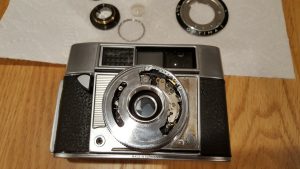
So, with nothing to lose, I unscrewed the front lens element to gain access to the shutter and began the ritual of a naphtha oil bath. Upon the first application of the oil, the shutter immediately sprang into action. I repeated the process of soaking and then drying for 24 hours and soaking again, for a total of 3 different cycles.
After the shutter had dried from the third soak, I confirmed that the shutter was indeed firing as it should, but I saw that the aperture was constantly wide open whenever the camera was set to Auto.
I’ll save you from the troubleshooting I did, but it turns out the selenium meter was indeed dead. How these early auto exposure cameras work is that the selenium meter is physically connected to some type of metal needle that moves depending on how much light is detected. As the needle moves, it controls how wide the aperture can open when the shutter is fired. When the meter is dead, it doesn’t move the needle, which allows the aperture to open all the way. The camera “thinks” there is very little light since the meter isn’t responding, so it opens the aperture all the way to f/2.8. This would be a pretty big deal breaker if you didn’t have any control over the shutter speed, which you do, kinda, but I’ll get to that later.
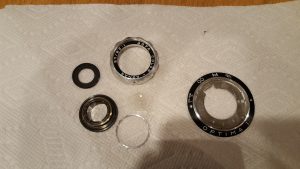
On some cameras with a dead meter, you can just shoot it in manual mode and use Sunny 16 or some other kind of external meter to calculate exposure. Looking around the barrel of the lens, there are aperture marks from f/2.8 to f/22, so couldn’t you just use this camera in manual mode and control it’s settings manually? Once again, the answer is, kinda.
Knowing that the shutter was freed up from whatever dried goo had caused it to jam, I was intrigued by the prospect of using this camera despite it’s limitations. After all, it was the model after a historically significant model, and AGFA always had a reputation of pretty good lenses, so I thought it was worth a shot to use it.
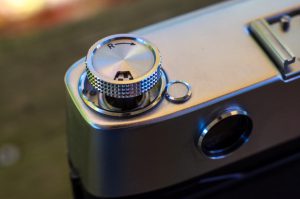
Before I get to both “kindas” mentioned above, I’ll point out a few other interesting features of this camera. I really appreciated the clean lines, especially the top plate of the camera. A subtle, but nice detail of the camera is that the rewind knob is recessed into the top plate when not in use. A small circular latch is used to pop up the knob when you need to rewind the film. When not in use, you simply press it back into the top plate.
Like many late 50s/early 60s German cameras, the Optima has a rear mounted wind lever that sticks out of the back of the camera. This was a trait common among compact cameras made by Zeiss, AGFA, and several other German manufacturers. The camera trades width for height, giving a somewhat square appearance from the front.
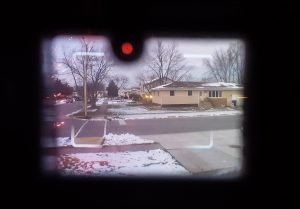
The viewfinder is nice and large and features bright framelines with two parallax correction marks. Also visible in the viewfinder is a little red circle that would have turned green with proper exposure had the meter been working. As it is now, the circle has a slight jiggle when I press the shutter release, but it never moves from the red position due to the dead meter.
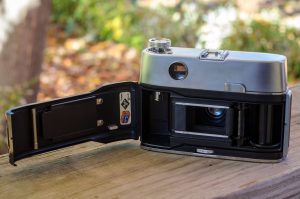
Opening the film compartment is mostly the same as other cameras, except backwards. There’s a sliding latch on the right side of the camera to release the door, which swings to the left.
Finally, the frame counter is visible on the rear of the camera, below the film compartment. Although an uncommon location, I prefer it to the bottom frame counter on some other cameras.
That’s pretty much all there is to the layout of the camera. If the Optima had a working meter, my instructions for using the camera would be quite simple, but since it doesn’t, several hoops must be jumped through to make use of what little manual control is available to you.
Using the AGFA Optima with a Dead Meter
The AGFA Optima was designed to be a fully automatic camera. Set your film speed, turn the ring around the lens barrel to Auto, point it at something, press the shutter release button, and let the camera do the rest.
When the meter is dead, the camera consistently fires the shutter at f/2.8 no matter how much lighting there is. Normally with a fixed aperture, you could compensate the exposure by adjusting the shutter speed, which at first, the Optima does not allow you to do, but wait. There is a selector for film speed. On the Optima I, your options are ASA 10 – 100. On later Optimas, the highest film speed was ASA 200.
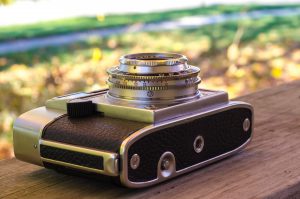
Now film speeds aren’t very useful unless you know how they affect the shutter, and thankfully, the Optima’s user manual tells you that ASA 100 is equal to 1/250 and ASA 50 is 1/125. Expanding that out, that should mean ASA 32 is ~1/60 and ASA 10 is ~1/30.
These are, of course approximates. Whatever the true values are, it’s pretty safe to assume that the slowest film speed translates to a shutter speed around the slowest the shutter supports, which is 1/30. Upon peering through the lens while firing the shutter at various film speeds confirms these estimates seem to be close.
Since you have some control over shutter speed, and you know the aperture will always be f/2.8 you could do some complex Sunny 16 estimating wide open at f/2.8 and selecting an appropriate shutter speed from 1/30 – 1/250. The problem with this is that this is a scale focus camera and anything less than infinity gets to be a little difficult to estimate with the lens always at maximum aperture since your depth of view is narrower. I would reserve using the camera this way for landscapes or things very far away so that things can still be in focus. I wouldn’t try shooting closeups this way. There’s another option though, and while it has it’s own caveats, it will at least make getting focus easier.
Originally, the AGFA Optima was designed to support flash photography. Unlike some leaf shutter cameras that support flash synchronization at all speeds, the Prontor-Lux shutter on the Optima is only flash synchronized at 1/30.
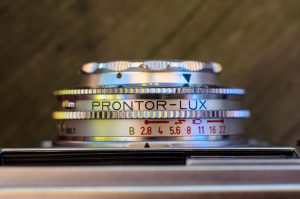
When you want to shoot with a flash on the Optima, you must take it out of Auto mode and choose one of the camera’s 7 aperture settings, or Bulb. This allows full control over the aperture size of the camera, but not shutter speed.
The trick is, that you don’t have to actually use a flash to use these modes. You can take the camera out of Auto mode in a well lit outdoor environment and still control the aperture. You’re just stuck with a shutter speed of 1/30. Once again, using some Sunny 16 magic, you should be able to figure out a compatible aperture size for most scenes using the fixed 1/30 shutter speed.
Now of course, this limits your options when shooting, but that’s to be expected when using a broken camera in a way which it wasn’t intended. ISO 50 – 100 speed film would be ideal, but for my test roll through the Optima, I only had Fuji 200 at my disposal, so I used that.
Using Sunny 16 with ISO 200 speed film, if I was shooting in shade, I would pick a shutter speed of 1/200 with an aperture of f/5.6. Since I can only shoot 1/30, which is roughly 3 stops slower than 1/200, I’d need to compensate the aperture 3 stops which is f/16. Had I been using ISO 100 speed film, I could use f/11.
A benefit of shooting this way is that the smaller apertures like f/11 – f/22 extend your depth of view which means you have more wiggle room for what it is in focus. Of course, you have a slow shutter speed of 1/30 which means that you have to be very careful to hold the camera steady when shooting.
If all of this hurts your head, I’ll try to simplify it with this chart:
| Shutter @ 1/30 sec. |
ISO 50 |
ISO 100 |
ISO 200 |
ISO 400 |
| Dusk | f/5.6 | f/8 | f/11 | f/16 |
| Full Shade | f/8 | f/11 | f/16 | f/22 |
| Overcast | f/11 | f/16 | f/22 | – |
| Partly Sunny | f/16 | f/22 | – | – |
| Full Sun | f/22 | – | – | haha! |
As you can see, the limited 1/30 speed shifts your normal Sunny 16 apertures down a bit, and limits you to medium to low light scenes. You could only think about shooting the camera this way in bright scenes if you have a very slow speed film in the camera. It would work well indoors too, although I didn’t try that in my first roll.
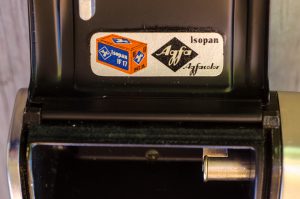
So, with this assumption that I could use the camera in one of these two “crippled” modes, I loaded in that roll of Fuji 200 and went shooting.
My Results
I sent this roll, along with 9 others to Willow Photo Lab, in Willow Springs, MO. They are a discount lab who primarily advertises their services on eBay for prices considerably lower than the more established mail order labs. Their price for developing, scanning, and return shipment of 10 rolls is under $38. An average of $3.80 per roll is roughly one third of what Dwayne’s charges and even less than The Darkroom or Old School Photo Labs.
This was my third batch of film sent to Neil at Willow, and sadly, there have been issues with all three batches. None were deal breakers however, especially when considering the prices. The most glaring issue with this batch is the lines that are present in nearly every scan I received back. Thankfully, they all seem to be in the scans, and not on the negatives themselves, so if I ever get my own scanner, I can rescan these without the lines. I was able to hide most of the lines using some content aware tools in Photoshop.
What follows are 8 of the 24 images from that first roll. Not all were perfect, but I wanted to show you a realistic idea of what can be done with an AGFA Optima I with a dead meter.
To say that I was pleased was an understatement. Sure, some of the images had some problems. I struggled to get correct focus on closeups using the limited scale focus icons, and there were other examples where the 1/30 shutter speed caused motion blur. If I were to do this again, I would probably want to bring along a tripod or at least brace myself against something while shooting.
The good news is that my exposures were mostly spot on. In a few cases, I detected a bit of overexposure, but it was minor. I definitely agree that an ISO 100 speed film would be better suited to shooting with this camera like this, but its definitely doable with 200 film.
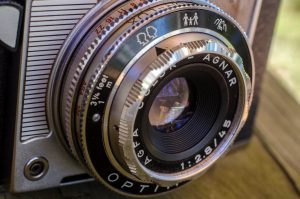
The AGFA lens delivered sharp and brightly colorful shots when I got it right. The 3-element Agnar is as good as any other triplet I’ve used. Putting a 4 or more element lens into a camera like this would have needlessly increased the price without improving the images a noticeable amount.
It is clear that AGFA made little compromises when making the Optima. It’s a shame that selenium meters so often fail after this amount of time, but that’s not something you can fairly complain about. Who in the late 1950s when this camera was being designed, would have thought that some guy would be reviewing it on his Internet blog, 56 years later?
I can definitely see the appeal of this camera when it was new. To have the ability to automatically expose images in a compact camera with a great lens in 1959 must have been an amazing feat. Sure, it has it’s limitations, but as long as you are willing to work within them, you can still get really nice shots from this camera.
As the second member in my collection from the Auto Exposure Class of 1959, I’d be lying if I said I wasn’t curious about how some of the other examples performed. If anyone reading this post finds an Optima in good working condition, and is wondering if they should pick it up, I’d say absolutely. Even if the meter isn’t working, it’s still usable, you’ll just need to jump through a few hoops!
My Final WordHow these ratings work |
The AGFA Optima I is the followup to a historically significant camera. Although it has a few revisions to that original model, its still very close to the design and performance of that model. While the example in my collection had a dead meter, I was still able to use it and the images I got from it were quite impressive. Had this camera been working properly, it would have been a very fun and capable compact 35mm camera that I predict I would have shot again. While I doubt many people would be willing to jump through the hoops I did for this review, if you find one of these for sale in working condition, I absolutely recommend picking it up. | ||||||
| Images | Handling | Features | Viewfinder | Feel & Beauty | History | Age | |
| 2 | 2 | 1 | 0 | 1 | 2 | 20% | |
| Bonus | none | ||||||
| Final Score | 9.6 | ||||||
Additional Resources
http://camerapedia.wikia.com/wiki/Agfa_Optima
http://www.ukcamera.com/classic_cameras/agfa3.htm
http://www.collection-appareils.fr/x/html/page_standard.php?id_appareil=72

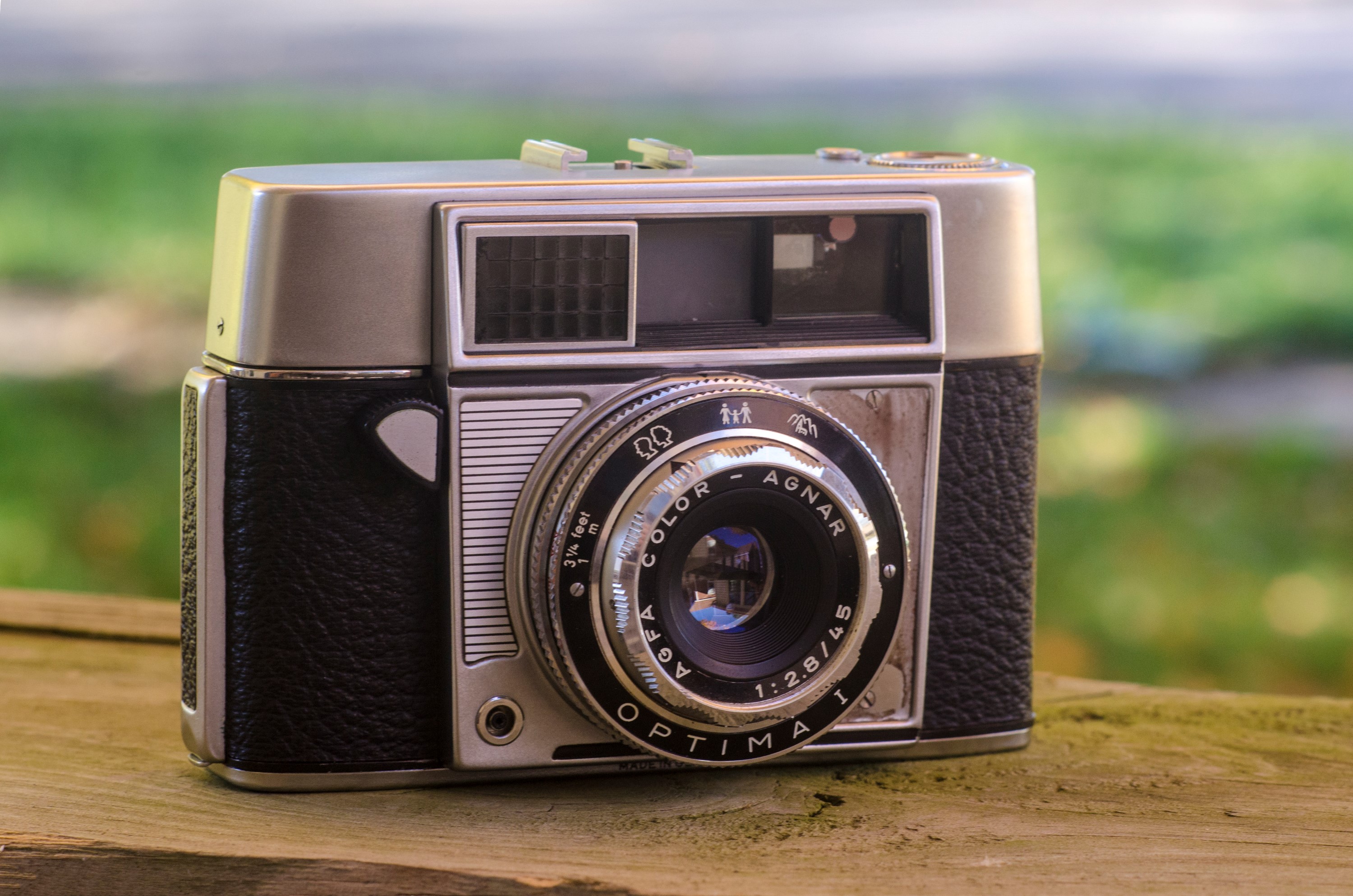
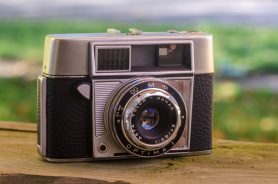
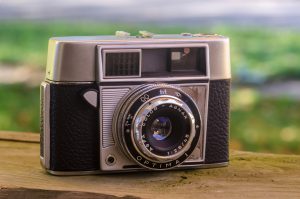








Hey, nice post! I have to agree that these Optimas are quite nice cameras to use (especially if they are functional!). But I would like to point out that Agfa was still improving their Optima line-up into the late 1970s.
For my personal preference their final generation called Optima sensor electronic are the perfect cameras for hanging around with friends and whenever I don`t want to think about shutter speed or aperture. Maybe I am little biased because I started film photograpy or photography in general with these little gems but I still like using my Agfa Optima 1035 or 1535 to this day.
(https://de.wikipedia.org/wiki/Agfa_Optima#Optima_Sensor_electronic (German))
(https://en.wikipedia.org/wiki/Agfa_Optima_1535_Sensor (English))
Very interesting. I bought an Optima 1 at a flea market for ten dollars a few days ago. Although the protruding part of the cover had cracks, the camera itself was very new and the lens glowed blue and looked very spiritual. After reading this article, I not only learned about its origin, but also how to repair it. Thanks to the author. Reading is beneficial. Thank you!
Am I correct ? please
At Mode A (with dead meter)
it will operate on fix apeture of f2.8 with variable 4 shutter speed by shifting ASA tab
ASA 100 = 1/250s
ASA 50 = 1/125s
ASA 32 = 1/60s
ASA 10 = 1/30s
At Flash Mode (with dead meter)
it will operate on fix shutter speed of 1/30s with variable Aperture from f2.8 to f22
Wow! Incredible review. I just bought an Optima I this morning at a thrift store. It was the first thing I saw, when I entered the premises. It “spoke” to me; it said “please buy me, please” ! So I did. Inside was a roll of Vintage (red AGFAR canister) film. I’m having it processed. Can’t wait to see the photos (next week) when I go to pick them up! If they come out I will take a copy back to that thrift store. Hopefully they will “go back” to whoever took them ‘s family. It was a RELIEF to find out Fujitsu 200 film will work!
Millions of thanks + Appreciation to you!!
Glad you liked the review Melvin! AGFA’s Optima cameras were very nicely designed and produce excellent images. Their fatal flaw is the dependence on the selenium light meter on most models, but if you find one that has a working meter, they’re great cameras to shoot with.
I have an upcoming review of the AGFA Flexilette coming up in a couple weeks, so be sure to subscribe and keep checking back to the site!
Which shutter release cable do I need for this camera? Not a lot of info out there. This page actually has the most info I’ve been able to find in one place. Thanks for compiling it!
The AGFA Optima I does not have a provision for a shutter release cable. This is something that was removed from the original AGFA Optima that preceded it.
Oh, touché! I mistakenly thought the flash port/connector was for a shutter release. Thanks!
Nice post thanks for sharing!
Just bought a AGFA optima and waiting for it! Learned a lot from this post! I’m new to this with old cameras but I think it’ll be so much fun to take with me on road trips and gatherings!
Excellent article and advice & information.
What a fabulous review. Like you say – who in 1959 could have even conceived of this review on the interwebs in the 2020s?
I look forward to my Optima, which is currently in transit from its seller to me 🙂
(No idea if the meter works).